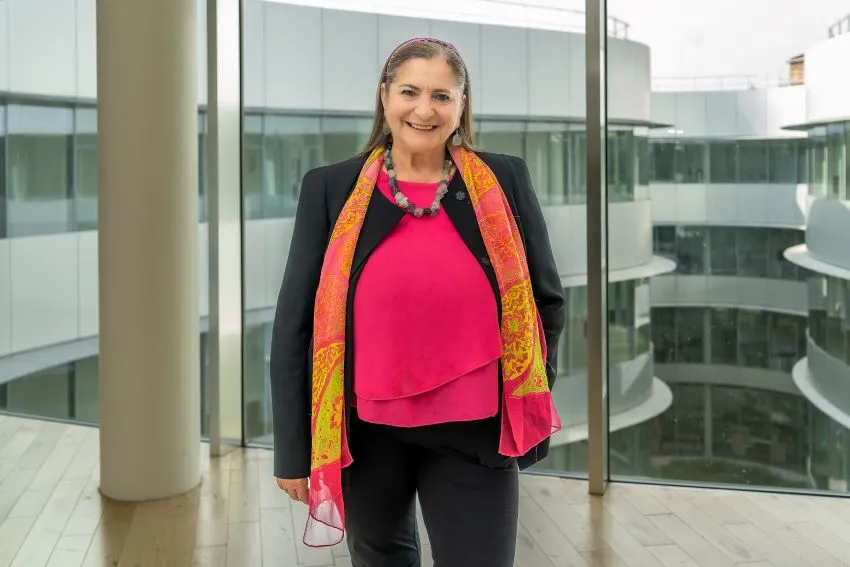
Augmented creativity
Generative AI creates content, ideas and artifacts, including music, visual art, software, products, using Large Language Models, i.e. probabilistic models that start from the linguistic patterns learned from the data inputs on which the AI was trained, which in the case of GPT-3 reaches the staggering number of 175 billion parameters.
Good marketing is made of insights, strategies, ideas and the development of new offers and constructions of relationships and market processes that create value for customers and the company.
AI can create insights from listening to consumers in social media or from the interactions with customer services to generate ideas for new products. Adidas used generative AI to create the design for a new shoe based on customer feedback, historical sales data and market trends. AI can assist in creating 3D models of products, also optimizing the final output, evaluating costs, manufacturability, consumer preferences and possible pricing options. META Advantage on Facebook and Instagram advertising, on the other hand, allows you to create and optimize campaigns, generating and testing hundreds of creative versions, up to choosing the most performing one in terms of conversion, once the campaign objectives have been indicated. Coming to the automation of customer service, we have been dealing with chatbots for some time but often with a rigidity and a quality termed by the New York Times "the spiral of misery". ChatGPT is certainly less rigid in its responses and for this reason it has been recently adopted by Bank of America and other financial companies.
Today, however, various criticisms are raised (among others, by Ogilvy) against the drift of digital marketing toward personalized and optimized communication via AI verging on obsession, at the expense of a more authentic connection between brands and customers based on meanings and values that are also collective and on a kind of creativity that knows how to connect in a less mechanical way to the personality and identity of the brand. These criticisms join the more specific ones pertaining to generative AI, which highlight important critical issues in these systems in terms of the non-verifiability of information, the difficulty of giving recommendations in complex contexts, and flaws in the protection of personal data and copyright.
Let us remember that, according to Margaret Boden, creativity derives from a kind of virtual reality in the human head, made up of spaces and mental maps, (often subconscious) "theories" about the world which we use to navigate reality. They are the basis of our creativity because we can modify and reinvent them. They involve three types of thinking: exploratory, combinatorial, and transformative. On its own, generative AI has excellent exploratory and combinatorial capabilities but several limitations on the ability to change these maps autonomously or even just to combine them in a way for which it has not been trained. In cooperation with humans (and in marketing we mean not only marketers but all consumers and other stakeholders), the result can overcome the limits of both.
On the quality of information (without addressing issues of truth which would require a much broader discussion leading to somewhat uncertain outcomes), we recall that in the history of communication and journalism effective methods have been developed for assessing the quality of professional gatekeeping processes (community relevance, checks on sources, etc.), which can be included in generative AI systems, even in collaboration with humans. The announced disaster of the explosion of fake news and information manipulation in social media is due to human agents, i.e. the development of algorithms for optimizing attention and engagement for advertising purposes and malpractices by organized groups of humans, not to the machine intelligence itself.
The ability to make recommendations/decisions in a complex context depends on the challenge between two different visions of how AI should work. On the one hand, the exponential growth of data crunching (brute data force) that guides the learning of neural systems, to generate answers whose sources and logic are unknown ex-post; on the other, the neuro-symbolic approach promoted by the former head of the Watson project and now followed by META, where the search for probabilistically correct combinations starting from data mining and massive data crunching (by an invisible agent) becomes complementary with more traditional, rules-based, methods, and the input of already available models, which are tested and transparent to users in their causal relationships.
In summary, the bet is that we find a way to make so-called "philosophical zombies" (replicas of human intelligence that do not have most of the human capacities for intelligence) and humans, with all their inefficiencies but also great abilities, work together. As Margaret Boden said already in 1995: the challenge is to understand how humans can use AI to increase their potential to be creative, not to eliminate it.